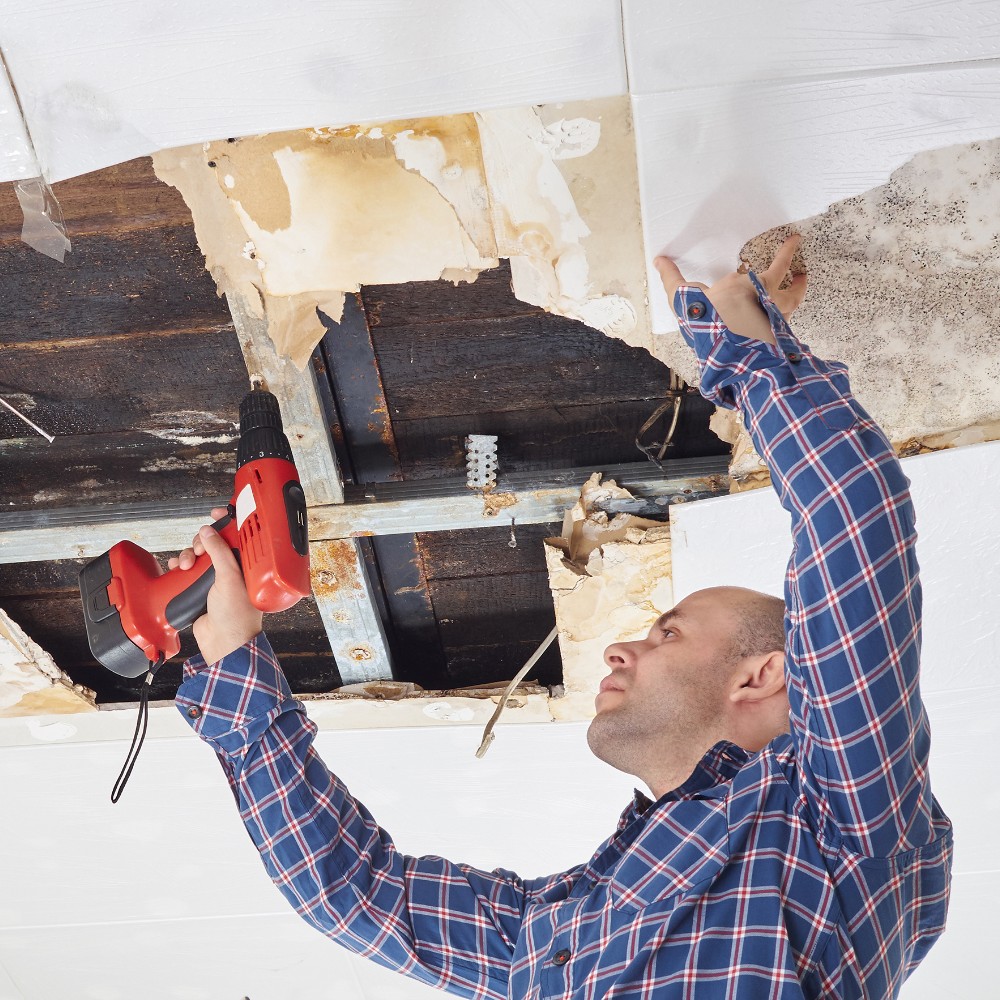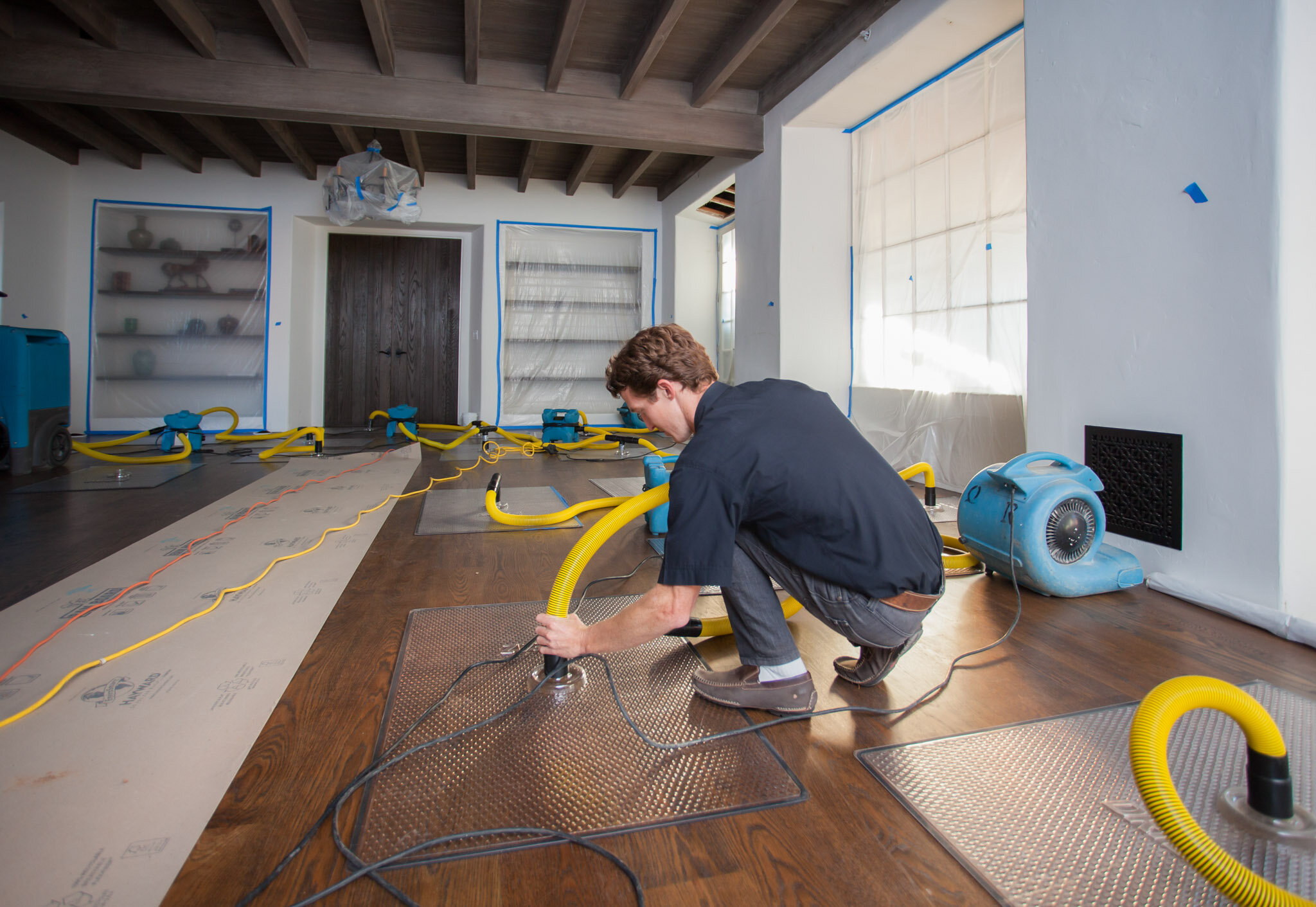Water Damage Restoration 101: Understanding the Process and Price
Water damage can strike suddenly, leaving property owners in a state of confusion. Comprehending the reconstruction process is essential for effective recovery. From evaluating the damage to choosing the ideal provider, each step affects the total result and price. Aspects such as the sort of water damage and seriousness likewise play a substantial duty. What are the details techniques utilized in repair, and exactly how can one get ready for possible expenditures?
Types of Water Damage

First Evaluation and Examination

Water Removal Techniques
Following the preliminary assessment, efficient water removal techniques are used to alleviate damage and avoid more issues. These techniques include using customized devices such as completely submersible pumps and industrial-grade vacuum cleaners - Water Damage Restoration. The option of method depends upon the volume of water present and the kind of materials influenced. For standing water, submersible pumps are commonly utilized for quick removal, while vacuum cleaners are perfect for removing water from rugs and upholstery. Furthermore, progressed methods like water extraction floor coverings might be utilized for hard-to-reach locations - Water Damage Restoration. The objective is to get rid of as much water as possible, minimizing the potential for mold development and architectural damage. Motivate and reliable water extraction is essential in the overall water damage remediation process
Drying and Dehumidification Process
When the water extraction is total, the drying and dehumidification procedure comes to be vital to bring back the afflicted area. This stage normally uses industrial-grade dehumidifiers and air movers to effectively reduce moisture levels. The dehumidifiers reel in damp air, getting rid of excess moisture, while air movers circulate air to speed up dissipation. Monitoring equipment is often used to track moisture and temperature level levels, making certain optimal drying out problems. The period of this process can vary relying on the extent of the water damage and ecological factors. It is vital to extensively completely dry all influenced products, consisting of walls, flooring, and furnishings, to prevent mold development and structural damage. Appropriate implementation of this action is critical for a successful repair end result.
Cleaning and Disinfecting Afflicted Locations
A comprehensive initial evaluation and assessment of affected locations is crucial to identify contamination levels as soon as the drying out procedure is full. Water Damage Restoration. Reliable cleansing methods and proper items must then be used to get rid of particles and spots. Sanitization and sanitation approaches are essential to ensure that harmful pathogens are eliminated, restoring the area to a risk-free condition.
First Assessment and Inspection
Prior to beginning any reconstruction initiatives, a complete preliminary evaluation and examination of the impacted locations are crucial for reliable cleansing and disinfecting. This procedure includes determining the level of water damage, determining the resource of the water intrusion, and examining the materials influenced. Inspectors commonly search for indicators of mold development, structural integrity issues, and damaged valuables. The evaluation also consists of examining wetness degrees using specific tools to ensure no hidden water pockets remain, as these can bring about additional issues. Recording the searchings for is vital for planning the following action in the restoration process. An in-depth preliminary evaluation enables remediation specialists to devise a targeted strategy for reliable cleaning and sterilizing, inevitably minimizing damage and wellness threats.
Cleaning Up Techniques and Products
Effective cleaning and sterilizing of water-damaged locations need a variety of items and techniques tailored to the specific products influenced. For permeable surfaces like look what i found drywall and carpeting, extraction methods are vital to eliminate excess dampness, complied with by deep cleaning with specialized detergents. Non-porous materials such as ceramic tile or metal can be cleaned up utilizing commercial-grade cleaners that successfully get rid of impurities. Heavy steam cleaning is another efficient method, especially for carpetings and upholstery, as it utilizes heats to eliminate bacteria and mold (Water Damage Restoration). Furthermore, green products are progressively prominent for their safety and security and effectiveness - Water Damage Restoration. Inevitably, choosing the proper cleansing methods and items not only ensures prompt tidiness however also help in avoiding additional damage and carcinogen connected with water invasion
Sanitization and Disinfection Methods
When resolving water damage, appropriate sanitization and disinfection methods are necessary to ensure the safety and health of the damaged environment. After first cleansing, surface areas have to be treated with proper disinfectants to remove virus, mold, and germs that thrive in wet conditions. Common approaches consist of using EPA-approved chemical disinfectants, which can be used via spraying or cleaning strategies. Furthermore, ultraviolet (UV) light systems can properly sterilize locations by counteracting microorganisms without rough chemicals. The selection of technique often depends upon the kind of products impacted and the degree of contamination. Eventually, detailed sanitization not just recovers a secure home however additionally aids protect against future health dangers related to remaining wetness and mold and mildew growth.

Fixings and Restoration Options
Assessing the damage triggered by water direct exposure is important for identifying the ideal fixings and restoration choices. Homeowners may face various problems, consisting of damaged drywall, deformed floor covering, and endangered architectural components. Depending on the degree of the damage, repair work may involve changing areas of drywall, setting up new floor covering, or enhancing architectural beams. In cases of extreme damage, full replacement of affected materials may be needed. Furthermore, expert conservators usually advise utilizing wetness meters to assess covert moisture degrees before determining on the ideal course of action. It is necessary to act promptly to avoid mold development and additional wear and tear. Picking the ideal options not only recovers the home but additionally assures long-lasting safety and security and functionality.
Elements Influencing Restoration Prices

The extent of water damage straight impacts the reconstruction costs house owners can anticipate to incur. Elements such as the resource of the water, the period of exposure, and the afflicted materials considerably influence prices. Tidy water damage from a damaged pipe is usually much less pricey to bring back compared to damage caused by sewage. Furthermore, the level of contamination dictates the demand for specialized cleansing and disposal solutions, additionally boosting expenses. Geographical area also contributes, as regional labor rates and availability of repair services can vary. The necessity of the action impacts prices; quicker treatments normally lead to decrease overall expenditures by avoiding additional damage. Recognizing these aspects is vital for property owners when approximating restoration prices.
The three key types of water damage are categorized based on contamination levels: clean water, grey water, and black water. A comprehensive preliminary analysis and inspection are essential steps in the water damage repair process. For standing water, submersible pumps are commonly made use of for rapid removal, while vacuum cleaners are perfect for extracting water from carpetings and upholstery. The degree of water damage directly affects the restoration costs house owners can expect to sustain. Clean water damage from a damaged pipeline is normally less expensive to restore contrasted to damage created by sewage.